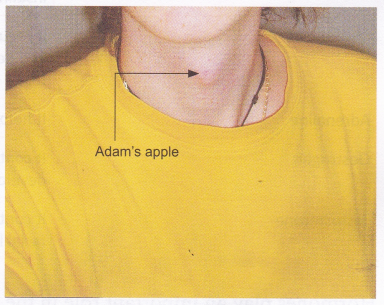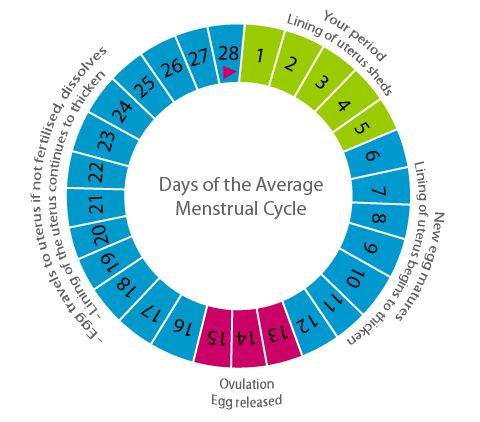What are the Changes of Adolescence and Puberty
The period of transition from childhood to adulthood is called adolescence. The boys and girls passing through this period are called adolescents. The World Health Organization (WHO) defines adolescence as the period of life between 10 and 19 years of age. Adolescence is characterized by changes like development of breasts in girls and facial hair in boys. As these characteristics help in distinguishing males (i.e., boys) from females (i.e., girls), they are referred to as secondary sexual characteristics. The stage in which secondary sexual characteristics develop is referred to as the stage of maturity or puberty. Puberty is the start of the time when a boy is biologically ready to become a father and a girl is biologically ready to become a mother. Let us discuss the changes that take place when girls and boys reach puberty.
Physical Changes
The following physical changes take place in girls and boys during puberty.
- Increase in height and weight Puberty is characterized by a ‘growth spurt’—a rapid increase in height and weight in both boys and girls. The rate of growth may vary from person to person. Generally, girls grow faster than boys initially, but both reach their maximum height around 18 years of age.
- Change in body shape In girls, the hips broaden and the pelvic region widens. In boys, muscles develop and shoulders become broader.
- Body hair During puberty, hair develop under armpits and in the pubic region in both boys and girls. Boys also develop facial hair (i.e., moustache and beard) and hair on the chest.
- Development of reproductive organs In girls, the ovaries enlarge and start producing mature eggs. In boys, testes and penis develop completely and the testes start producing sperms.
- Change in voice The voice box or larynx increases in size during puberty, which results in a change in voice. Generally, this increase in size is more in boys and the enlarged voice box can be observed as a prominent lump called Adam’s apple in the neck region. Due to larger voice boxes, boys generally develop a deep voice while girls tend to have a high-pitched voice.
 Initially, increase in the size of the larynx may cause a boy’s voice to ‘crack’ or ‘break’, but the voice becomes normal after some time.
Initially, increase in the size of the larynx may cause a boy’s voice to ‘crack’ or ‘break’, but the voice becomes normal after some time. - Increased activity of sweat and oil glands During puberty, sweat and oil glands in the body become very active and cause increased sweating. Increased activity of these glands may also cause acne or pimples in adolescents.
In addition to the above, the following physical changes are observed in girls. - Enlargement of breasts During puberty, breasts increase in size and milk-producing glands called mammary glands develop inside them.
- Beginning of the menstrual cycle From the onset of puberty, the two ovaries inside a girl’s body take turns to produce an egg or ovum (plural ova), and one ovum is released every 28 days. The process of release of an ovum by an ovary is called ovulation.
The cycle of producing and releasing mature ova is called the menstrual cycle (menstrual means month in Latin). The start of the menstrual cycle indicates that the girl has now acquired the ability to have a baby. During the menstrual cycle,
- Different parts of the body release hormones to prepare the body for pregnancy. The pituitary gland secretes a hormone that stimulates the ovary to release a mature ovum. The ovaries release two important hormones, oestrogen and progesterone, which change the lining of the uterus. The ovum then begins its journey through the fallopian tube.

Ovum, fallopian tube, and uterus - In case the ovum is not fertilized by a male sperm, it dies and starts disintegrating and the hormonal levels drop. The lining of the uterus starts breaking down and is shed, accompanied by a loss of blood. This phase, which usually lasts 4-6 days, is called a girl’s period or menstruation. Figure shows the various changes occurring during the menstrual cycle.

Changes occurring during the menstrual cycle
Emotional Changes
One may experience various emotional changes during puberty. Due to an increase in the hormonal level, mood swings may occur. One may become conscious of the changes occurring in one’s body and feel awkward or embarrassed. During this phase one may also develop attraction towards the opposite sex. All these changes are normal and are a part of growing up. Puberty is also the phase during which one has a great capacity to learn and one’s way of thinking matures.
Role of Hormones During Puberty
The changes experienced during adolescence are brought about by hormones. In girls, a hormone released by the pituitary gland stimulates the ovaries to produce female sex hormones called progesterone and oestrogen. Oestrogen is responsible for the production of ova and development of secondary sexual characteristics in girls. In boys, a hormone released by the pituitary gland stimulates the testes to produce the male sex hormone called testosterone. Testosterone is responsible for the production of sperm cells and the development of secondary sexual characteristics in boys.
Nutritional requirements and personal hygiene
During adolescence, there is rapid physical and mental growth and, as a result, the nutritional requirements of the body increase tremendously. It is, therefore, important to consume a balanced diet at this stage. Consuming too much junk foods should be avoided as these are deficient in important nutrients like proteins, vitamins, and minerals. Milk, green- leafy vegetables, and fruits are some examples of food items that are good for adolescents. Since girls start menstruating at this stage, they need to consume foods rich in iron, calcium, and zinc.
Personal hygiene is also very important during adolescence. Sweating may become a major problem at this stage. Bacteria multiply rapidly in sweat and cause bad odour. One can manage these odours by bathing daily and wearing clean clothes.
It is also very important to keep the genital areas clean. Girls should be aware of supplies like sanitary pads and tampons and their usage during menstruation. A large number of adolescents are affected by acne or pimples.
One should wash the face with a mild non-oily soap to keep it clean. In some cases, acne may require medical attention.
Drug abuse and AIDS
Drug abuse is a common problem among adolescents all over the world. Drugs are chemical substances that produce physical, mental, behavioural, or emotional changes in the user. Use of a drug for purposes other than medicinal use is called drug abuse. Drug abuse harms the body seriously. Once a person starts taking drugs, he/she develops physical and/or psychological dependence on them. This dependence, commonly termed as addiction, makes it difficult for people to stop taking drugs. It is, therefore, important to say no to drugs and avoid them at all costs. Alcohol, nicotine (present in tobacco products like cigarettes, gutka, and pan masala), cocaine, and marijuana are examples of drugs.
People who use drugs are also at risk of being infected with HIV, the deadly virus that causes AIDS. This virus can spread by sharing syringes used for injecting some drugs. It also spreads through sexual contact with an infected person.